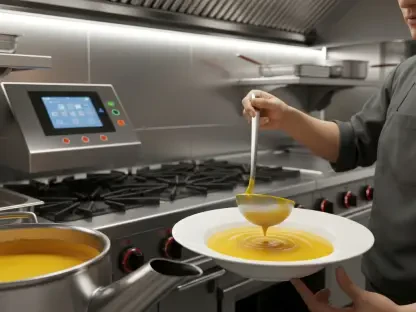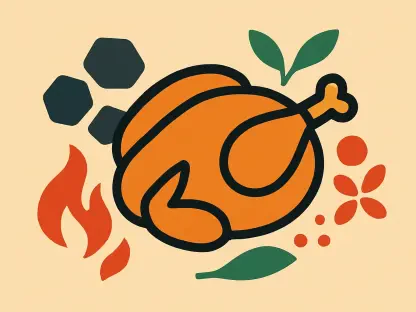As we step into 2024, the drinks industry is witnessing notable shifts in consumer preferences and operator strategies. According to the CGA Business Leaders Survey 2024, two major trends are expected to dominate: the resurgence of draft beer and a growing emphasis on health-conscious beverages. This article delves into these trends and explores their implications for the drinks market.
Draft Beer: The Uncontested Champion
The Unprecedented Rise of Draft Beer
The survey reveals that 62% of respondents believe draft beer will be the spotlight in 2024. This overwhelming consensus indicates a strong and renewed enthusiasm for this traditional favorite in pubs and bars. The return of social drinking and a sense of normalcy post-pandemic have boosted draft beer’s appeal, making it a staple offering once more. Industry professionals attribute this revival to consumers seeking familiar pleasures and communal experiences after years of disrupted social routines. With its rich history and deeply ingrained presence in social settings, draft beer holds a unique charm that other beverages have yet to replicate.
Beyond the numbers, the anecdotes from operators across the nation tell a compelling story of draft beer reestablishing its dominance. Many establishments have reported a noticeable uptick in foot traffic and sales volume since reintroducing or expanding their draft beer selections. The sentiment is not just limited to urban pubs; even rural and suburban bars are experiencing similar trends. Operators are responding by refining their draft systems, investing in premium kegs, and training staff to ensure optimal beer service. This proactive approach aims to meet the high expectations of discerning drinkers while capitalizing on the renewed interest in draft beer.
Beyond Traditional Lagers: Exploring Diversity in Draft Beer
Operators are not just sticking to classic lagers; there’s an expanding interest in offering world lagers and craft beers on tap. A significant portion of the respondents (31% for world lagers and 27% for craft beers) highlighted the growing demand for diverse and high-quality beer options. This reflects a consumer trend toward seeking unique and premium drinking experiences. Bars and pubs are increasingly curating their draft lines to feature an eclectic mix of international brews and local craft beers, catering to a clientele that values variety and quality over the conventional offerings.
The effort to diversify the draft beer menu is also a strategic move to tap into the craft beer revolution that continues to sweep across the globe. Craft beers, known for their distinct flavors and artisanal brewing methods, attract a segment of consumers who are willing to pay a premium for a unique drinking experience. World lagers, on the other hand, bring an exotic appeal, introducing drinkers to global beer cultures and traditions. Consumers’ willingness to experiment with different styles and origins underscores an ongoing shift towards personalization and premiumization in the beverages market. By offering a diverse range of draft beers, operators are positioning themselves to capture and sustain the interests of a broader audience.
Health and Moderation: The New Drink Doctrine
Virgin Cocktails and Low-Sugar Alternatives
Health consciousness is at an all-time high, and this is evident in the drinks consumers are choosing. The survey shows a substantial interest in virgin cocktails (35%) and low/no-sugar drinks (33%), suggesting that more people are opting for healthier and more mindful drinking options. This shift marks a significant change in traditionally indulgent spaces like bars and pubs. Venues that were once synonymous with high-calorie, sugar-laden beverages are now embracing the trend by updating their menus with healthier alternatives. This transition is not only meeting the current consumer demand but also attracting a new, health-conscious demographic to these establishments.
Operators are taking note of this trend and exploring innovative ways to incorporate health-forward options into their beverage offerings. Classic recipes are being reinvented to align with health trends, ensuring that the essence of cocktails remains intact while reducing their calorie count. Natural sweeteners, fresh fruit juices, and herbal infusions are becoming staples in mixology. The growing popularity of zero-proof spirits also plays a crucial role in this evolution, allowing bartenders to craft sophisticated and flavorful virgin cocktails. The emphasis on low-sugar alternatives extends beyond cocktails, influencing the entire beverage menu, thus providing patrons with a wider range of choices that cater to their health preferences.
Wellness Beverages as a Growing Market Segment
Wellness beverages, which garnered 29% of respondents’ votes, are another testament to the health-focused trend. These drinks often include ingredients known for their health benefits, such as antioxidants, vitamins, and adaptogens. For operators, this means innovating their menus to cater to a health-conscious clientele. The inclusion of wellness beverages requires careful selection of ingredients and a commitment to quality, as today’s consumers are more informed and selective about what they consume. Operators are increasingly collaborating with nutritionists and wellness experts to develop drinks that not only taste good but also offer genuine health benefits.
This focus on wellness extends beyond the ingredients to the overall presentation and marketing of these beverages. Bars and pubs are emphasizing transparency, highlighting the health properties of each ingredient and educating consumers about the benefits. This approach builds trust and engages patrons who are invested in their well-being. Additionally, the rise of social media has created a platform for operators to showcase their innovative wellness drinks, further driving interest and demand. The infusion of wellness into the drinks menu represents a holistic approach to catering to the modern consumer’s lifestyle, blending pleasure with health in a balanced manner.
The Rise of Low and No-Alcohol Options
Exponential Growth in Cider and Beer
Low and no-alcohol beverages are experiencing exponential growth. Low/no-alcohol cider sales have surged by 63%, albeit from a small base, now making up 1% of total volume. Similarly, low/no-alcohol beer sales have increased by 33%, capturing 0.8% of total beer sales. This niche yet rapidly expanding market segment is driven by a preference for moderation and balanced lifestyle choices. Consumers are increasingly seeking to enjoy the social aspects of drinking without the adverse effects of alcohol, prompting operators to expand their low and no-alcohol selections to cater to this demographic.
The burgeoning interest in low and no-alcohol options has led to significant innovation within the industry. Breweries are experimenting with new brewing techniques to enhance the flavor profiles and overall quality of these beverages, ensuring that they do not compromise on taste despite the absence of alcohol. The market now offers a wide array of low and no-alcohol options, from fruity ciders to rich, flavorful beers, appealing to a diverse audience. This variety ensures that consumers have ample choice and can find a beverage that aligns with their taste preferences. The overall trend toward moderation reflects a broader societal shift toward mindful consumption and health awareness. Operators who effectively incorporate these options into their menus stand to attract a growing segment of health-conscious consumers.
Penetration into Wine and Spirits
Even traditionally high-alcohol-content categories are not immune to this trend. Low/no-alcohol wine or Champagne sales have risen by 28%, accounting for 0.1% of total wine sales, while low/no-alcohol spirits have grown by 6%, now constituting 0.2% of total spirits sales. This steady infiltration into all drink categories signifies a pragmatic consumer shift towards enjoying the social aspects of drinking without the associated downsides of alcohol. The availability of low and no-alcohol versions of popular drinks allows consumers to partake in celebrations and social gatherings without feeling excluded or compromising their health goals.
The expansion of low and no-alcohol options into the wine and spirits categories is driven by advancements in production techniques that preserve the essence and complexity of traditional drinks. Wineries and distilleries are investing in the development of products that mimic the sensory experience of their alcoholic counterparts. This innovation ensures that consumers do not have to sacrifice flavor or quality when opting for low or no-alcohol alternatives. Additionally, the growing acceptance of these beverages is fostering a more inclusive drinking culture, where individuals with different preferences and health considerations can all enjoy the same social rituals. Operators are recognizing this shift and curating their wine and spirits lists to include these options, thereby enhancing the overall customer experience.
Diverse and Craft Offerings
The Craft and Artisanal Movement
The survey points to a strong interest in both craft and artisanal beverages across various drink categories. Artisanal coffee, for instance, has captured consumers’ imaginations, embodying a preference for premium and well-crafted experiences. This trend spans both alcoholic and non-alcoholic drinks, underlining a broader cultural shift towards quality over quantity. Consumers are increasingly valuing the craftsmanship and story behind their beverages, seeking out experiences that offer more than just a drink. Bars, cafes, and restaurants are capitalizing on this trend by partnering with local roasters and brewers to bring unique, high-quality offerings to their patrons.
The appeal of craft and artisanal drinks lies in their distinctiveness and the personalized touch they offer. This movement is characterized by a departure from mass-produced products in favor of those made with care and expertise. Whether it’s a meticulously brewed cup of coffee or a small-batch spirit, these offerings resonate with consumers who appreciate the artistry involved. The emphasis on craft and artisanal beverages is also a response to the growing desire for transparency and authenticity in consumption. Operators who embrace this trend by curating a diverse selection of carefully crafted drinks can create a more engaging and memorable experience for their customers.
Local and Unique: Tequila, Stout, and British Wine
Lesser-emphasized but noteworthy trends include the rise of tequila, stout, and British wine, each cited by 21% of respondents. Additionally, there is a burgeoning interest in locally sourced and uniquely crafted beverages like micro-distillery spirits. These preferences highlight a consumer desire for distinctive and regionally authentic drinking options. The resurgence of tequila, for example, reflects a broader appreciation for its complexity and versatility, moving beyond its traditional image as a party shot to a sophisticated sipping spirit. Similarly, stout, with its rich and robust flavors, is finding favor among those seeking hearty and distinctive brews.
The growing interest in British wine and micro-distillery spirits underscores a shift toward supporting local producers and embracing local flavors. This trend is part of a larger movement towards sustainability and reducing the carbon footprint associated with long-distance transportation of goods. Consumers are increasingly inclined to explore and celebrate the unique offerings of their region, contributing to a thriving local economy. For operators, highlighting locally sourced beverages can enhance their brand’s sustainability credentials and resonate with patrons who value environmental responsibility. This focus on local and unique offerings not only diversifies the drinks menu but also creates opportunities for storytelling and deeper engagement with customers.
Economic Considerations for Operators
Navigating Utility Costs and Breaking Even
Despite these positive consumer trends, economic factors remain a significant concern for operators. Utility prices are projected to stay higher than pre-2022 levels, impacting operational costs. Moreover, nearly half of the operators reported just breaking even during the summer, indicating ongoing economic challenges. Strategic planning and cost management will be critical as operators balance innovative consumer offerings with practical business realities. Operators must remain agile and adaptive, leveraging data insights to optimize their operations and maintain profitability in a challenging economic landscape.
To navigate these economic pressures, many operators are exploring cost-saving measures and efficiency improvements. This includes investing in energy-efficient equipment, renegotiating supplier contracts, and streamlining operational processes. Additionally, the importance of financial forecasting and budgeting cannot be overstated, as accurate predictions and prudent management can make the difference between breaking even and turning a profit. Operators who can effectively balance cost control with the delivery of high-quality, innovative offerings will be better positioned to thrive in the competitive drinks market of 2024.
Leveraging Resources for Effective Management
As we venture into 2024, the drinks industry is undergoing significant transformations driven by evolving consumer preferences and innovative strategies from operators. The CGA Business Leaders Survey 2024 highlights two dominant trends poised to shape the sector this year: a renewed interest in draft beer and an increasing turn toward health-conscious beverages.
Draft beer is making a notable comeback, as consumers gravitate towards fresh, quality pints offered by local breweries and bars. This trend signals a shift back to social, communal experiences that draft beer often brings, creating opportunities for local taprooms and craft breweries.
On the other hand, there’s a rising demand for health-conscious beverages, reflecting consumers’ growing attention to wellness and healthier lifestyles. This includes a wide array of non-alcoholic options like sparkling waters, natural juices, and even low-calorie cocktails that offer indulgence without the guilt. This pivot towards mindful drinking opens up avenues for brands to innovate with healthier ingredients and transparent labeling.
Together, these trends mark a dynamic period for the drinks market in 2024. As draft beer reclaims its place and health-focused drinks gain traction, the industry is set for an exciting evolution.









